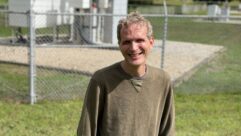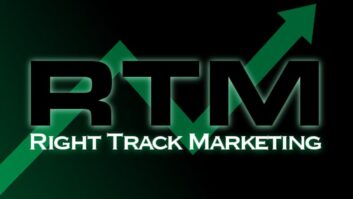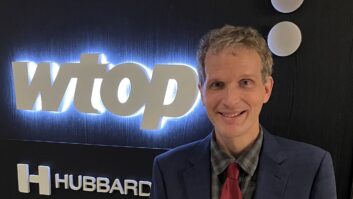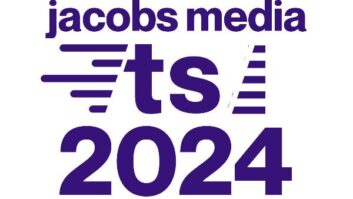This winter, when the wind screamed across the North Dakota prairie and the Red River sat white and frozen, a new 50,000 watt heat source offered talk radio fans some refuge — if their politics were conservative.
WZFG(AM), “AM1100 The Flag,” is a 21st century rarity: a brand-new-from-the-radials-out 50,000 watt AM station.
The Flag is licensed to Dilworth, Minn., and is the newest player in Arbitron market No. 218, Fargo, N.D./Moorhead, Minn. (MSA population 342,000). It pumps out a 24-hour stream of conservative talk radio at several power levels: 50,000 watts non-directional during daytime hours, 5,000 watts during critical hours and 400 watts on a two-tower array at night.
Multimedia
If a new 50,000 watt AM is now almost a blast from the past, rest assured that everything’s up to date in Fargo-Moorhead: The Flag hit the air in the summer of 2008 as a multi-platform media content source, not just a muscular radio station. The new station is an integrated digital marketing platform, providing a range of Web content as well as broadcast and streaming audio.
Programming is all-conservative, all the time, with the exception of Doug Stephan’s more across-the-board “Good Day” network show during a couple of low-power overnight hours. From 5 to 8 a.m. — while the station ramps up to full power — Paul Bougie and Shelly Knight, well-established personalities in the Fargo-Moorhead market, handle a locally-oriented morning drive-time show.
Then at 8, when WZFG’s Broadcast Electronics 4MX-50 transmitter is at full throttle, the station takes on a more regional and even international flavor. That’s when The Flag’s president, general manager and “Chairman of the Common Sense Club,” Scott Hennen, hits the air with a show that is heard across parts of three states and western Canada.
Hennen’s conservative talk has been heard in the market for more than a decade, primarily on heritage news-talker WDAY(AM), where he was also general manager. He has also substituted on Sean Hannity’s network radio show and credits Hannity’s help for getting the new station off the ground.
Surprisingly, during an election year in the largest market of a red state, the flag-wavers of conservative talk radio had been hard to find in Fargo-Moorhead.
“Hannity’s show had been cut back to two hours a day at WDAY and Rush Limbaugh wasn’t on here at all,” Hennen said. “When I told Sean I was putting the new station together he said, ‘If you go, I’ll go.’ Both Hannity and Limbaugh now follow Hennen’s show on The Flag as do Laura Schlessinger and Mark Levin.
WZFG ownership is headed by Hennen and Ryan Rogen, vice president and chief revenue officer. There are three other local investors.
‘Think TV first’
“We’re programmed on the Phil Boyce model,” Hennen said. Boyce, who left WABC(AM) in New York in October 2008, after more than 13 years as head of programming, originally hired Hannity for a drive-time slot and created a highly rated talk station that never tried to mix political viewpoints. “It’s for a predominantly conservative talk show audience,” Hennen said. “Not all things to all people.”
Another well-known conservative talk personality offered a suggestion that helped launch the new station as a truly multi-platform entity: While the station was being planned, Hennen had a conversation with Tony Snow. The former White House press secretary and Fox News Channel commentator had also been a regular guest host on Limbaugh’s show.
“He said, ‘What are you going to do for a talk studio? Build it like a TV studio. Think TV first. Look at Rush’s studio: They built it for radio and had to work in all the TV lighting and camera positions and things later and it was a challenge.’
“So we designed ours from the walls out for video,” Hennen said. “It’s the showpiece of the operation.” With three cameras, full professional lighting and a switcher the studio is used for more than talk. Clients can go on the Web from there and other uses are in the works.
Snow died of colon cancer in July 2008, one month before The Flag signed on. Hennen says the talk studio is now named The Tony Snow Memorial Studio.
While planning continued through the spring of 2008, “We had the CP and had been telling people for months that we were coming on,” Hennen said. “We started our Web site in March and announced that Hannity would be on our station. Then Rush. And people were really getting excited. We purchased a building in late April but renovation took longer than we wanted.”
The building, at 16 Broadway in downtown Fargo, is a heritage structure that was gutted and redesigned for The Flag and its co-owned oldies FM station, KEGK, FM 106.9, The Eagle.
Its exposed brick walls were left intact in the talk studio, which features a large storefront-type window where passers-by can look directly in on talk shows in progress. Hennen said the window is important to the whole feel of the operation.
“I wanted to capture the energy of today. So many stations just sit in a bunker. We’re celebrities to our listeners so we should be visible. We’re just steps off the main drag here in downtown Fargo.”
Apart from the walls, everything else at the stations is brand new.
Opening storm
Sign-on day was even more exciting than it is for most stations. The Flag hit the air on Aug. 11, 2008 at 8 a.m. during a thunderstorm. First guest: Sen. John McCain, Republican nominee for president. Minutes later the tower, 10 miles away in Dilworth, Minn., was struck by lightning. The transmitter shack filled with smoke but The Flag still flew — and remained on the air.
Moving forward, Hennen said: “We’re very much Web 2.0. My Super Alerts with news and information I think people should know about go straight to their computers. We have AP News Video, blogs, on-demand audio, podcasts. Our advertisers can go on the radio but we also provide a lot of platforms for their messages.”
Hennen said the two stations take their multi-platform capabilities seriously. Each has a .tv Web site — The Flag’s is am1100.tv — and account executives are called integrated marketing specialists. “Our approach to clients is, ‘Let’s partner, let’s co-brand, let’s use our studio to produce content for your Web site.'”
“Most of all,” Hennen said, “we have great personalities and lots of community service. We give our listeners the chance to ask questions to the powers that be.”
Doug McLeod is a longtime major league TV and radio play-by-play announcer, radio station manager and sales management consultant. Contact him at[email protected].
AM1100 The Flag Sample Equipment List
Broadcast Electronics 4MX-50 transmitter
Moseley DSP 6000 STL
iMediaTouch on-air and production software
Harris PR&E NetWave and StereoMixer consoles
Harris PR&E VistaMax Envoy Networked Audio Management System
Electro-Voice RE20 and RE27 microphones
Vorsis M-1 Digital Voice Processors
Yellowtec and Heil microphone and monitors arms and booms
Telos TwoX12 telephone hybrids and controllers
AirTools 6100 broadcast audio delays
Sony BRC300 3 CCD robotic color video cameras
Lowell video studio lighting package”I went to NAB and went shopping,” Hennen said, realizing a dream of many a broadcaster. “We didn’t have a Cadillac budget — more of a Buick budget — but we did pretty well.”
Studio operations are centered around a Harris PR&E NetWave console and iMediaTouch automation. Other studio equipment was provided through RF Specialties in Kearney, Mo. The video component includes three Sony BRC 300 robotic color cameras and a studio lighting package from AVI Systems in Grand Forks, N.D.
The station’s chief engineer is Jim Offerdahl of Offerdahl Broadcast, who was assisted in the buildout by engineer Mark Borchert.












